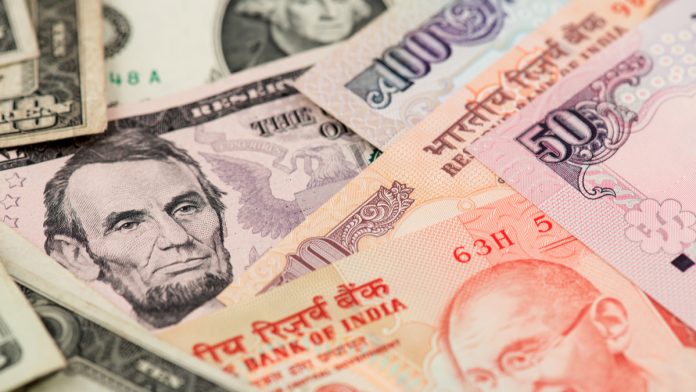- Indian Rupee (INR) shows resilience
- The RBI is expected to hike rates again
- US Dollar (USD) rises versus major peers ahead of the FOMC minutes
- US data has been stronger than expected
The US Dollar Indian Rupee (USD/INR) exchange is edging lower on Wednesday, reversing gains from the previous session. The pair settled +0.2% higher on Tuesday, settling at 82.86. At 10:00 UTC, USD/INR trades -0.03% at 82.83 and trades in a range of 82.78 to 82.86.
The Indian rupee is showing resilience against the stronger USD dollar on expectations that the Reserve Bank of India could increase its interest rate by a further 25 basis points in April, taking the benchmark rate to 6.75%, a 7-year high, before pausing until the end of the year.
Given the hotter-than-expected January inflation, the RBI reiterated its hawkish stance in the February meeting. The central bank hated that it wants to see it aside to fall in inflation in order to change its hawkish stance to neutral.
Inflation in India Rose to 6.52% in January, which is above the central bank’s upper tolerance of 6% after falling at the end of last year into the 2%-6% tolerance band.
The US Dollar is falling against the Rupee but rising versus major peers. The US Dollar Index, which measures the greenback versus a basket of major currencies, trades +0.03% at the time of writing at 104.20, adding to gains from the previous session.
The US dollar is looking ahead to the release of the minutes from the latest Federal Reserve interest rate meeting, where the Fed hiked rates by 25 basis points, a slowdown from previous rate hikes. Investors will be scrutinizing the minutes for clues over how many policymakers supported a larger rate hike.
Since the meeting, several federal reserve policymakers have indicated that they would prefer to return 2 larger rate hikes.
However, it’s also worth bearing in mind that the February meeting was held before a series of stronger-than-expected US data, such as hotter-than-forecast inflation, a rebound in retail sales, and a rebound in U.S. business activity to an 8-month high. As a result, there is a possibility that the minutes will be considered out of date.





